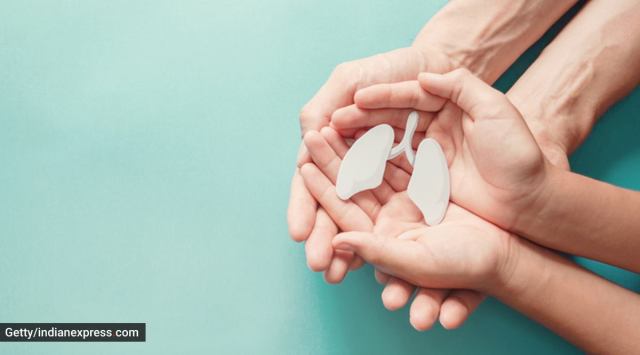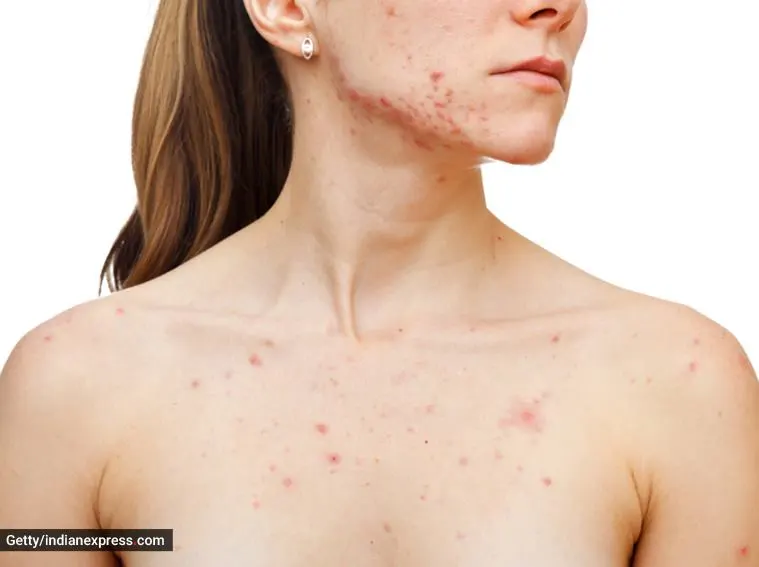- India
- International
How your skin can indicate the presence of a respiratory disease
A bluish colour around the mouth or inside of the lips appears when the body is not getting enough oxygen, warns an expert
 A respiratory disease can affect the lungs, respiratory tract, trachea, nerves and muscles that aid in normal breathing. (Photo: Getty/Thinkstock)
A respiratory disease can affect the lungs, respiratory tract, trachea, nerves and muscles that aid in normal breathing. (Photo: Getty/Thinkstock) The human body often communicates with signs and signals to indicate if there is a health issue that needs immediate attention. One of the primary indicators is the skin, which alters its appearance to specifically point to a bodily problem, whether it is through acne, or a change of colour.
Sometimes, you may need to notice the skin to figure out a respiratory health issue. Dr Rinky Kapoor, senior consultant dermatologist, cosmetic dermatologist and dermato-surgeon, and director of The Esthetic Clinics says the relation between respiratory diseases and the skin has long been established in Chinese medicine.
“A respiratory disease can affect the lungs, respiratory tract, trachea, nerves and muscles that aid in normal breathing. Dermatological manifestations, because of respiratory conditions, indicate the severity or the stage of the disease, and help the clinician diagnose and start the treatment as soon as possible,” she says.
The doctor adds that non-respiratory symptoms that show up on the skin “act as an alert” to severe lung conditions, including “cancers and fibrosis”.
Here are some common skin signs indicative of respiratory diseases in humans; read on.

* Colour changes: A bluish colour around the mouth or inside of the lips appears when the body is not getting enough oxygen. The skin colour can also change to a pale greyish shade. This condition is medically called ‘cyanosis’ and affects the skin and mucous membranes. Cyanosis can also be peripheral and affect the fingers and other body parts.
* Clammy and cool skin: Even though the body is sweating, the skin feels cool to the touch. This happens when the breathing rate becomes very fast.
* Reddish purple bumps on the skin: This is caused because of a condition affecting lungs called ‘sarcoidosis’. Reddish purple bumps that are inflammatory in nature erupt on different parts of the body. The most common areas are ankles and lower legs. Sores can also develop on the nose, cheek and ears and people often experience dark patches of skin and skin growths on scars or tattoos.
 Reddish purple bumps that are inflammatory in nature erupt on different parts of the body. (Photo: Getty/Thinkstock)
Reddish purple bumps that are inflammatory in nature erupt on different parts of the body. (Photo: Getty/Thinkstock)
* Dermatomyositis or itchy and scaly rash: These rashes usually appear on the areas of skin that are exposed to the sun. The rash can be red or purple and cause swelling in upper eyelids and around fingernails.
* Herpes labialis: This condition causes rash of the skin and mucous membranes and is usually very visible around the lips. The rash can develop into blisters and cause a burning pain on the skin.
* Easy bruising: Problems in the lungs can cause a patient to bruise easily. These bruises take time to heal and may also be indicative of ‘Cushing Syndrome’.
* Nail clubbing: This condition causes thickening of nails, which lose their form, shape and colour, and become soggy. The ends of the fingers become thicker and the patient might find it difficult to use their hands.
* Fast growing bumps that are reddish: These are usually common in patients at risk for lung cancer. These bumps can bleed, affecting the head, neck and upper body. They are often hard and painless.
Dr Kapoor concludes by saying that the skin signs of respiratory diseases can be identified by a dermatologist. “But, if you have been facing a skin issue along with wheezing, coughing, feeling of breathlessness etc., tell your doctor about it for a proper investigation and diagnosis.”
📣 For more lifestyle news, follow us on Instagram | Twitter | Facebook and don’t miss out on the latest updates!
Apr 20: Latest News
- 01
- 02
- 03
- 04
- 05

























